Focus on Climate Science
-
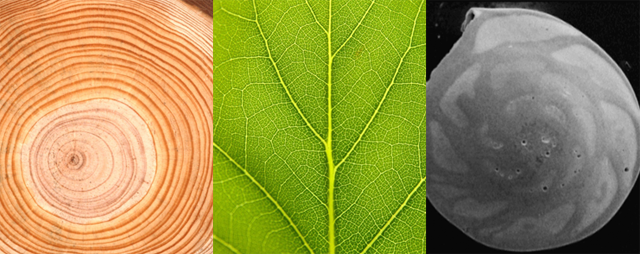
USC Earth Sciences has active programs studying processes in the current climate system and “proxy” archives of past climate variability, beyond the short reach of historical instrumental records. Studies of past climate using stable and radiogenic isotope geochemistry and biogeochemistry have revealed climate modes very different to our current climate. These terrestrial and marine records provide important insights into the nature and magnitude of climate shifts that we might expect in the future.
USC researchers and students in the Stott Laboratory are studying the oxygen and hydrogen isotopic composition of rainfall over California, Southeast Asia, and Africa, in efforts to document how atmospheric circulation and rainfall have responded to tropical influences such as El Nino. Climate archives include:
tree rings – Studies using the isotopic composition of tree rings from Bristlecone and Foxtail Pine, two of the world’s oldest trees, are reconstructing atmospheric precipitation variations spanning several centuries in California.
speleothems – The oxygen isotope composition of calcium carbonate deposits that form speleothems in karst environments (caves) are being used to determine the isotopic composition of the original rainwater, information that can then be used to reconstruct a history of rainfall variability and atmospheric circulation.
marine samples of water and deep sea sediment cores – Studies of water and marine sediment from the deep sea are yielding information about ocean environmental change.
The Feakins Lab at USC uses biogeochemical techniques to reconstruct past climate and environmental change. Proxies include the carbon and hydrogen isotopic composition of various biomarker molecules for terrestrial and aquatic organisms. For example, long chain n-alkanes derived from plant leaf waxes, as well as various biomarkers for aquatic organisms e.g. alkenones. Isotopic techniques capture wet-dry paleoclimate variations through shifts in C3 versus C4 photosynthesis and the water isotopes in precipitation.
Current research in this area includes:
- Hydrogen Isotopes as a Paleohydrology Proxy
- Calibration studies of Hydrogen Isotopes in Californian vegetation
- Lacustrine records of late Holocene climate history
-
The climate modeling program at USC focuses on blending data and models to improve our knowledge of the low-frequency evolution of Earth’s climate, with a special focus on data-model comparison over the Common Era (the past 2,000 years).
Statistical Modeling
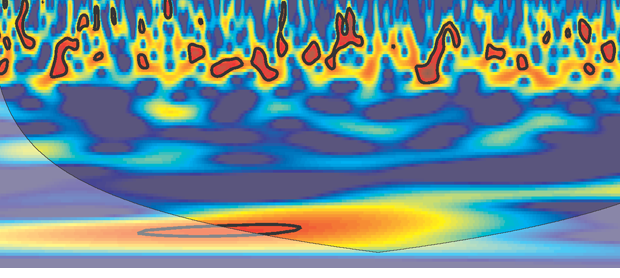
One avenue of research seeks to reconstruct past climate behavior by extracting statistical information from the recent geologic past. We use probabilistic models of climate fields to infer their variability from observed fluctuations in climate proxies. In collaboration with statisticians, the JEG lab is developing more accurate and efficient covariance estimation techniques to be able to detect robust climate signals in proxy data from corals, ice cores, speleothems, lake and marine sediment cores, and tree ring records. This approach aims to:
- Produce a better depiction of Earth’s recent natural variability to provide context for the detection and attribution of the recent anthropogenic influence on climate.
- Translate proxy records into a language understandable by physical scientists and numerical models.
Climate-Proxy Modeling

By nature, climate “proxies” only indirectly record climate signals. What exactly are they telling us? A great number of them take the form of water isotopes (ratios of the stable isotopes of oxygen and hydrogen), sensitive to both thermal and hydrological processes. On the other hand, global climate models (GCMs) speak a language rather foreign to proxies because their output is expressed in quantities such as temperature, rainfall, wind stress, and so on. How can this gap be bridged?
We are currently developing forward models of climate proxies, which explicitly incorporate physical, chemical and (in some cases) biological processes giving rise to geological proxy formation. This amounts to translating GCM language into proxy language. The ultimate goal of this dual approach is to blur the distinction between proxy data and climate fields, so as to enable the geologic record to quantitatively constrain climate models, with the hope of narrowing down the uncertainty in future climate projections.
Dynamical Modeling
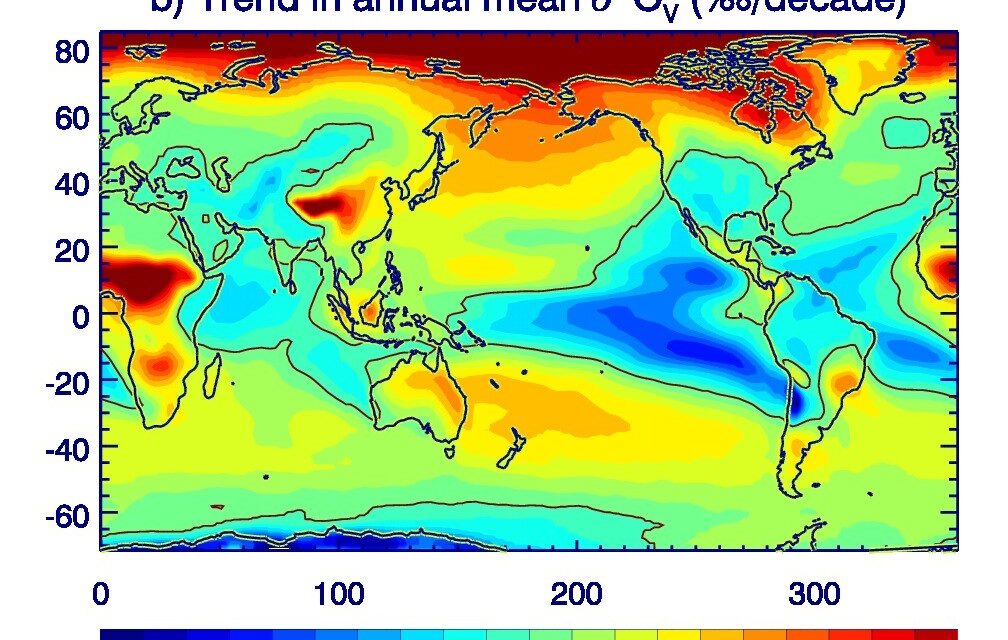
Trend in d18O of vapor (‰ decade-1, VSMOW) from 2007-2100. Trend line is calculated from annual mean d18O values from the ensemble mean of four RCP8.5 forced IsoGSM simulations.
General circulation models currently in use at USC:
- The ICTP AGCM (SPEEDY)
- IsoGSM Isotope-enabled atmospheric general circulation model
- cGENIE Earth System Model
The climate program at USC utilizes isotope-enabled general circulation models to investigate past, present and future climate system behavior. A significant focus of this work is to understand how climate variability influences the distribution of stable and radiogenic isotopes within the Earth System as the climate system varies and changes. This work is motivated by paleoclimate records that document large, and in some cases, abrupt variations in the isotopic composition of carbon and oxygen in marine and terrestrial proxies at times in Earth’s recent past.
Isotope-enabled general circulation and Earth System models are being used at USC to conduct experiments to test hypotheses that attempt to explain the isotopic variability seen in Holocene proxies such as ice cores, speleothems and marine foraminifera. This includes for example, century and multidecadal scale changes in the d18O and dD of glacier ice and speleothem carbonates from the western US, which reveal large, recurrent variations in their isotopic composition. If this isotope variability documents recurrent climate system behavior that has not been seen during short instrumental period, it is particularly important to learn what caused that variability because it is a measure of Earth’s natural internal climate system behavior. And because the isotope variability seen in these records stems from the complex interplay between atmospheric dynamics and surface processes that influences the isotopic signal transmitted to proxies, these influences are best investigated with an isotope-enabled general circulation model that captures these influences. These modeling studies go hand-in-hand with the observational work being conducted by Stott’s group at USC.
Earth System models, including the isotope-enabled cGENIE model are being used at USC to investigate carbon system behavior on glacial/interglacial timescales. A focus of this work is to test hypotheses that attempt to explain the systematic variations in atmospheric CO2 that accompanied each of the glacial cycles during the late Pleistocene. The flux of carbon to/from the Earth’s interior and from ocean reservoirs carries a distinctive isotopic signal that is incorporated into marine proxies such as marine calcifiers (foraminifera). Those distinctive isotope signals can be used to assess where carbon entered and left the climate system during glacial cycles. Stott’s group is currently conducting experiments to investigate how geologic sources of carbon influenced the d13C and Δ14C of ocean and atmospheric carbon during the last glacial termination as atmospheric pCO2 rose from ~180ppm to 280ppm.
-
We have continuing interests in paleoclimate studies of both terrestrial and marine ecosystems. USC research in this area has two foci: high-resolution paleomagnetic chronostratigraphy and environmental magnetism.
We use detailed records of geomagnetic field variability (secular variation, paleointensity, excursions, reversals) to date and correlate sediment records around the world. On a regional (global) scale, these methods have the potential to date/correlate sediment sequences to ±200 (±500) years over the last 1 million years. Rock magnetic measurements are used to characterize physical sediment variations and geochemical sediment alterations that address issues of environmental/climate variability.
Field research has included participation in five Ocean Drilling Program (ODP/IODP) expeditions:
- Site 893 – Santa Barbara Basin
- Leg 172 – Western subtropical North Atlantic Ocean paleoceanography
- Leg 202 – Southeastern Pacific Ocean paleoceanography
- Expedition 310 – Tahiti coral reef response to postglacial sea-level rise
- Expedition 323 – Bering Sea paleoceanography
Field research has also resulted in cores from more than a dozen lakes in the southwestern United States to reconstruct late Quaternary climate/environmental variability.
-
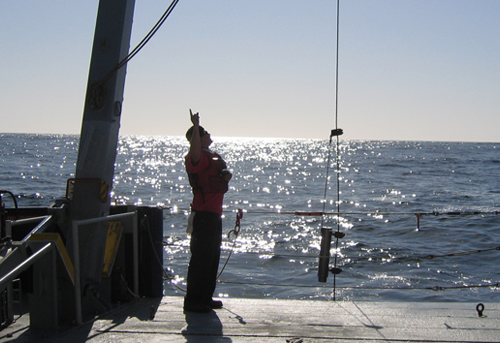
Research in USC’s Department of Earth Sciences includes efforts to understand the dynamics of the global carbon cycle, and its relation to climate, life, and other (bio)geochemical cycles.
Research in Ocean Sciences (facilitated in part through the dedicated Ocean Sciences Graduate Program) is a particular strength at the university, and the carbon cycle is interwoven among the work of all Ocean Sciences faculty at USC. Studies in the modern and prehistoric ocean system are providing insights into life in the upper ocean and deep ocean sediments with key implications for nutrient cycles, CO2 cycling, climate, and life on this and other planets. These studies include:
One of the grand challenges in paleoclimate science is to explain the recurrent variations in atmospheric CO2 that accompanied the climate variations (ice ages) during the Pleistocene. Research (Stott) is shedding new light on this long-standing challenge with observations and modeling results that indicate the flux of carbon into and out of the reactive pool has not been constant as the prevailing hypothesis has assumed.
Various groups examining the production of organic carbon in the upper ocean, the first step in the “biological pump” that helps sequester atmospheric CO2. These studies involve biological rate measurements, geochemical measurements and models, and various “process-related” measurements intended to ascertain what controls ocean production (Berelson, Hammond, Sanudo-Wilhelmy).
Work to measure the flux of organic carbon in the form of settling particles, studied with sediment traps and by inference through models of ocean chemistry (Berelson, Hammond). Both organic carbon and inorganic carbon (CaCO3) fall to the sea floor and become part of the sedimentary package that eventually turns into a sedimentary rock.
Studies of diagenesis (Berelson, Hammond, West), examining changes that occur to carbon-bearing materials post deposition, and determining the reactions that must be taken into account by any interpretation of environmental conditions based on a study of the rock record. Research into carbon cycling in the deep biosphere below the ocean floor, coordinated through the Center for Dark Energy Biosphere Investigations (Amend).
Work in the department also investigates the global transfer of carbon from the land surface to the oceans, exploring controls on both the flux of organic carbon transported by rivers and the rates of chemical weathering reactions (West). Tied to research on chemical weathering is work on the accelerating weathering reactions, as a technology for reduction of atmospheric CO2.
-
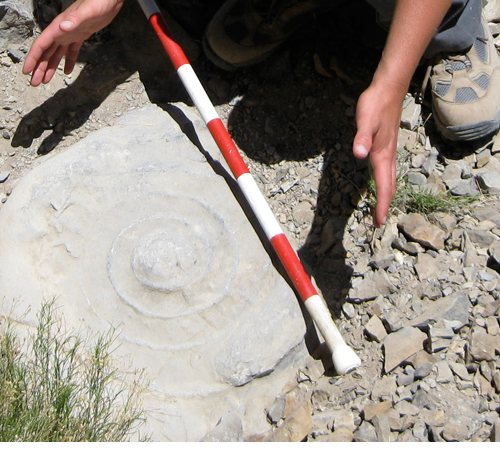 USC Earth Scientists continue our tradition of making new discoveries about the interwoven changes in Earth’s climate, chemical cycles, and life history over geologic time. This includes work on:
USC Earth Scientists continue our tradition of making new discoveries about the interwoven changes in Earth’s climate, chemical cycles, and life history over geologic time. This includes work on:The environment of the late Precambrian, when intense ice ages (Snowball Earth) were happening as early animals were evolving (Corsetti, Bottjer);
The effect of continental flood basalts on climate and mass extinctions at the end of the Permian and the end of the Triassic, as well as the recovery from these major mass extinctions (Corsetti, Bottjer)
Understanding and improving models of the global geologic carbon cycle, particularly over Phanerozoic timescales, including explicit carbon cycle modeling as well as research to refine parameterizations of key processes such as chemical weathering (West).
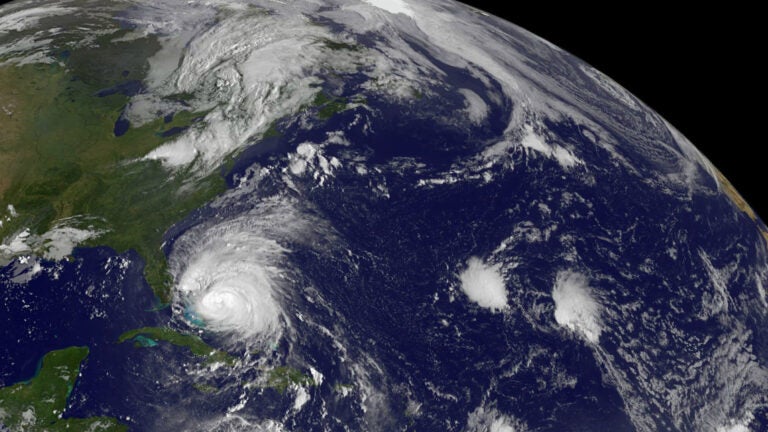
Hurricane Irene
Hurricane Irene approaching Florida, USA, August 25, 2010.
(Picture courtesy of NASA)
Related Courses
Please take a look at the recommended courses in Climate Science
